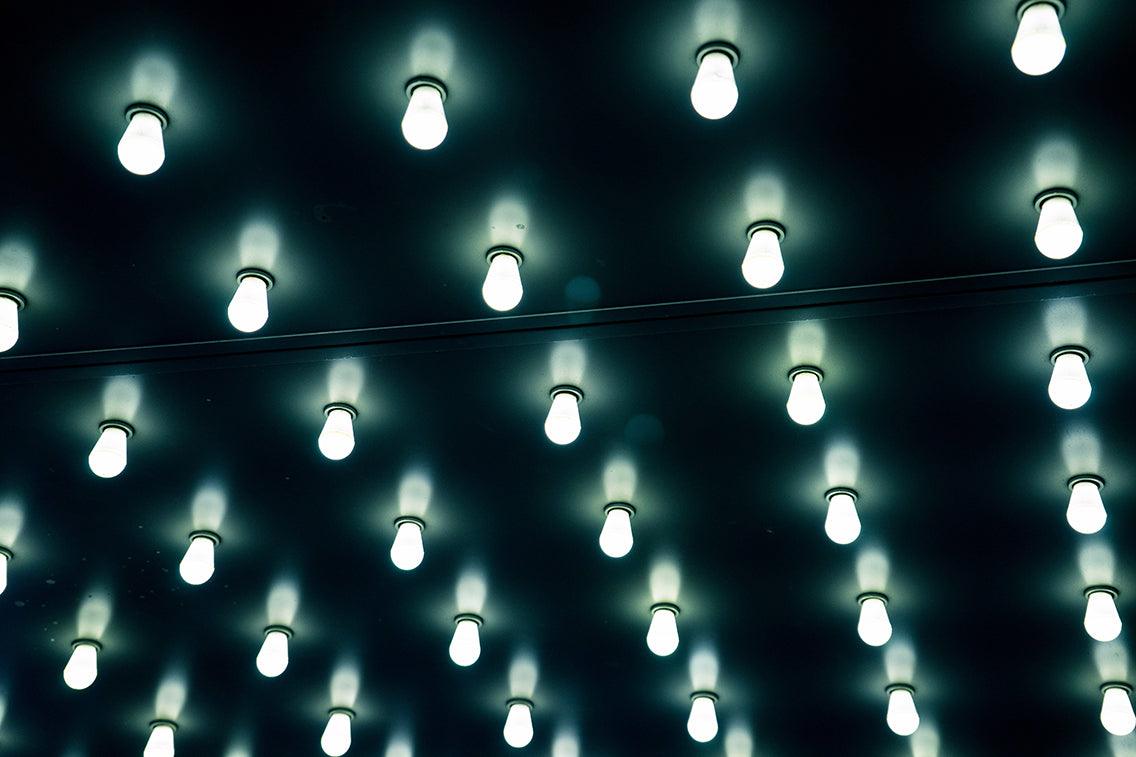In one of the latest articles we dealt with the micro cultivation techniques of the cannabis plant, i.e. the targeted cultivation of a few specimens in a limited cultivation space . Aimed at satisfying personal consumption. In that case we only briefly mentioned the issues concerning lighting , and therefore in this article we will deal with them more specifically.
Before starting, we refer to our previous article also regarding the mandatory recommendations on the laws in force in Italy regarding the cultivation of cannabis .
In the context of indoor cultivation (i.e. indoors), lighting plays a decisive role in the success of the growth of a cannabis plant, perhaps the most important one.
Why use artificial lighting?
The sun is the pivot of plant life, as it allows the plant's vital functions such as chlorophyll photosynthesis and transpiration (a kind of water self-regulation).
The intensity of the lighting, the type of light spectrum (warm or cold light) and the location of the source or its position and distance from the plant are essential factors to take into consideration for a micro grower.
And the possibility of not depending on the whims of the weather or simply on the location of our cultivation in relation to the position of the sun allows for real manipulations of the light-dark cycles to which the plants are subjected, without contraindications and with excellent results.
And in fact the technology on which current artificial lighting systems in the cultivation sector are based has made enormous progress in the last two decades also thanks to the growing demand for high quality homemade cannabis.
There are fluorescent, energy-saving, high-performance LED lamps on the market with adjustable light spectrum and so on and so forth. This is symptomatic of the fact that there is no absolute best lighting for indoor cultivation: all can be valid solutions, but there is the most suitable one for the projects and needs of every... budding grower!
And therefore a small guide to orient yourself in the growing offer of types of artificial lights is increasingly becoming an obligatory step in order not to risk relying on chance but on the contrary to make a personalized and informed choice.
Let's see the main existing lamp models, and compare the advantages and disadvantages of their possible use.
What are the main types of lighting for indoor growing?
Let's start with CFL lamps, acronym for Compact Fluorescent Lights , which translates into Compact Fluorescent Lamps). This pompous name refers to those very ordinary low-consumption fluorescent lamps , typically installed even in homes or small garages.
We chose to start from these because the undoubted advantage of a low cost makes them very attractive and in fact widely spread among indoor growers.
In addition to reduced consumption (and standard connections suitable for almost all lamp holders), CFL lamps also offer an excellent contribution for plant growth. Other undoubted advantages are availability (housewares stores, hardware stores...) and the notable range of possible light spectrums: from the "colder" lights suitable for the growth phase to the warmer lights, recommended for the flowering phase.
On the other hand, it should be noted that compared to models developed specifically for cultivation, CFL lamps develop a lower light intensity and therefore the number of lamps that will be installed per square meter or number of seedlings will be greater. Another factor to take into account is that they tend to heat up over time and this could be a problem in a confined environment.
Overheating is also a problem with HID ( High Intensity Discharge ) lamps, indeed: with these - it should be said straight away - you need a ventilation system to dissipate the heat.
Unlike the former, this type of lamp is specifically designed for indoor cultivation and coincidentally lends itself particularly well to the cultivation of cannabis. HIDs also have a variety of bulbs with different spectrums, from the coldest to the warmest depending - as already mentioned - on the vegetative phase of the plant.
Compared to other professional lighting kits, HIDs are relatively cheap to purchase, although the bulbs need to be replaced periodically because they are subject to a drop in brightness. Installation is simple, but the kit includes a specific power supply which cannot be approved.
A final aspect to keep in mind is that as the name suggests, energy consumption and the related expense on the bill should not be underestimated.
Then there are LED lamps, better known to the general public because they are also used at home. As many of us have seen, the latest LED lights allow for remarkable intensity and light penetration. Other well-known plus points are the absence of heat generated, the extended life and very low consumption.
However, the price of LED lights is not the lowest, and when it comes to buying in grow kits the price rises further. It could be recommended to those who think of recouping their expenses through… harvests!
And to stay in the field of high performance at high prices, here are plasma lamps. Here we are right at the ne plus ultra , if only in terms of wallet.
The operation of plasma lamps is extremely sophisticated. To simplify things a lot, know that the light bulb turns on via overheating generated by microwaves. That is, no connection to electricity, and therefore no wear and tear. This may be a justification for prices that are out of reach for most people, and yet we must advise against plasma lamps for simple enthusiasts.
We continue our review with LEC lamps (which stands for Light Emitting Ceramic ). They owe their name to the discharge tube (http://lft.unich.it/laboratorio-fisica-tecnica/images/pdf/lezioni/illuminotecnica3.pdf), made of ceramic.
The technology behind LEC metal halide bulbs has concentrated on the (successful) attempt to reproduce a light spectrum as similar as possible to the natural one generated by the sun. This potential has significant advantages, not least the natural inclination of sunlight to enhance the aromas of cannabis plants.
Furthermore, the light generated by LEC lamps emits UV-B rays which appear to be mainly responsible for the production of trichomes during the flowering phase. But be careful: it is scientifically proven that glass prevents the total irradiation of UV-B rays, and therefore care must be taken to eliminate any obstacle between the light source and the plant to fully exploit its effectiveness.
As regards the disadvantages of using these lights, in addition to the already mentioned considerable costs, it should be added that the UV-B rays diffused by this type of lamps are harmful to human beings, compromising the health of the eyes and skin if directly exposed. This means that, if you do not use a hermetically shielded grow room, a covering system is necessary that allows you to direct the lights only to the plants, which must be taken into consideration in the cost estimate phase.
Finally: the good old neon ! Well: we have little to add about neon that you don't already know. With a classic neon ceiling light you can set up a lighting kit that is easy to make (but there are also specific ones for cultivation), economical and reduced in energy consumption. Furthermore, neon is one of the lights that develops less heat, and those who have experimented with it for indoor cultivation ensure good results.
In short: if you had any doubts, we hope we have enlightened you!







